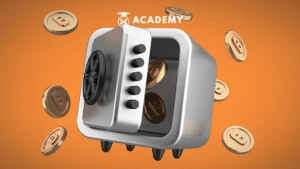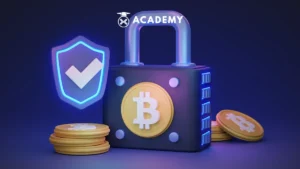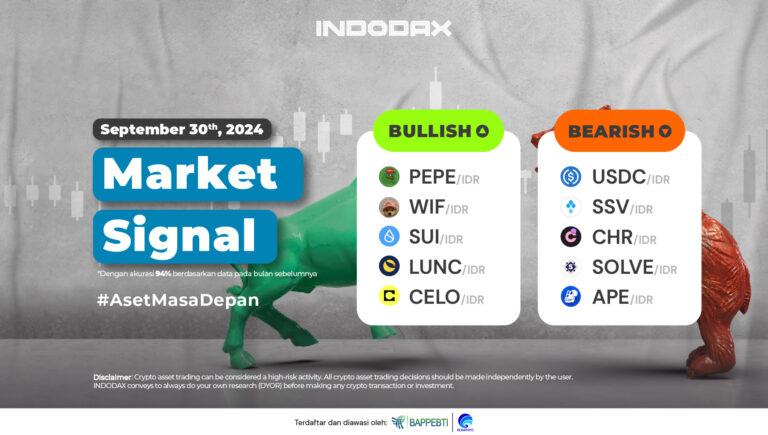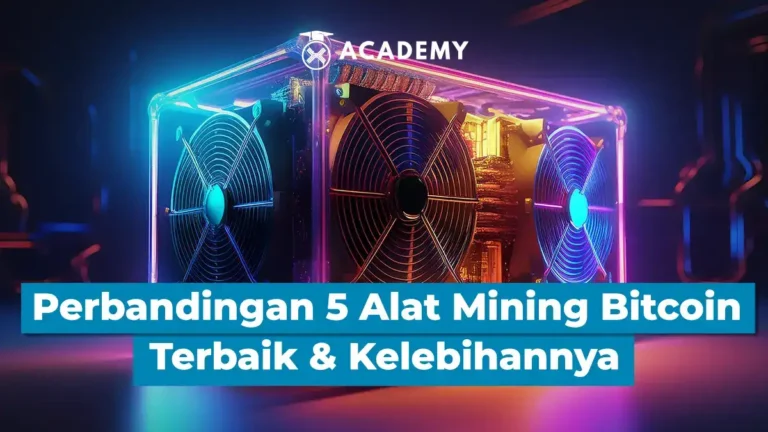In the crypto community, there is an often-heard statement about storing crypto assets, which is “Not your keys, not your crypto”. This means that if you don’t have control over the keys to your assets then they don’t really belong to you.
This concept is in line with the principle of decentralization in the crypto world. In this case, users are in full control of their assets. Self-storage of crypto assets is often referred to as self-custody.
Now, to better understand what self-custody is, starting from the definition, how it works, the difference with non-custodial wallets, to the types, see the following review.

What is Self-Custody in Crypto?
The FTX incident in early November 2022 served as a reminder of the importance of how we manage crypto asset custody. The incident reignited the debate on whether to store assets on exchanges (custodial wallets) or with self-custody.
In a custodial wallet, platforms like FTX are responsible for storing and keeping users’ crypto assets safe.
While the exchange cannot use those assets without consent, many people prefer to be in full control of their crypto assets.
Self-custody, or non-custodial, is a method where you manage your own crypto assets in a wallet that is completely under your control without third-party interference.
This can be analogous to keeping cash in a personal wallet instead of a bank. The purpose of self-custody is to ensure that crypto assets are fully under the control of their owners, without any intervention from other parties.
This principle also aligns with the essence of decentralization in the crypto world, which negates the need for third-party authorities or companies.
There are many non-custodial wallets to choose from, both online and offline.
Each type of wallet has its own advantages and disadvantages. However, both give users full control over their crypto assets.
How Self-Custody Works: Take Full Control of Your Crypto Assets
As for the self-custody system, you will create a password and receive a private key, often called a recovery phrase or seed phrase.
The private key is the most important element in self-custody. It is only through this key that you (or another party) can access the stored assets.
Usually, the seed phrase consists of 12, 18, or 24 random words arranged in a specific order. To access your wallet, you must enter the seed phrase according to the word order. Otherwise, access will be denied.
In addition to private keys, crypto wallets also have public keys, which are public addresses used to receive and send crypto assets and interact with decentralized applications.
This public address can be seen on sites like Etherscan and BscScan when checking transactions. then, why is the wallet address called a public key?
It is because it also functions as a key that must be “unlocked” with the approval of the “sign” command every time you connect with a new platform. It also serves as an additional layer of security to prevent spoofing.
Difference between Custody and Non-Custodial Wallet
Note that the main difference between custody and non-custodial lies in where your assets are stored.
In the custody model, you entrust your crypto assets to a centralized exchange (CEX), and they are responsible for holding them until you decide to sell or transfer them.
On the other hand, the non-custodial system requires you to store your crypto assets in a private wallet, which is completely under your control.
Using a custodial wallet on an exchange also makes it easier to trade and transfer crypto assets since the CEX platform is designed to facilitate these transactions.
In contrast, non-custodial wallets are usually a bit more complex. You need to understand gas fees, how to make transactions, and how to interact with different DEXs. Although more complicated, non-custodial gives you full control over your assets.
Also, custodial wallets on CEX don’t require you to separate different types of assets as one wallet on the platform can hold a wide variety of crypto assets.
In contrast, non-custodial wallets are often limited to specific blockchains. For example, MetaMask only supports Ethereum-based tokens like ERC20, while hardware wallets like Ledger Nano X are capable of supporting multiple blockchains.
Types of Self-Custody Wallets: Choosing the Right Wallet for Your Needs
The following are the types of self-custody wallets that can be chosen according to your needs, including:
Digital Wallet (Hot Wallet)
A crypto digital wallet is a type of self-custody wallet that is connected to the internet, often referred to as a hot wallet due to its connectivity. There are two main forms of hot wallet mobile apps and browser extensions.
The main advantages of digital crypto wallets are that they are lightweight, free, and accessible from anywhere.
Digital wallets make it easy for anyone to use self-custody, requiring only an internet connection and a browser, including Chrome, Microsoft Edge, or Safari.
However, the main disadvantage or risk of digital wallets is security. They are highly vulnerable to threats such as phishing, giveaway scams, and spoofing.
Usually, these types of scams will attempt to steal your private keys or get you to interact with fake platforms to drain the assets in your wallet.
Some examples of popular digital wallets are MetaMask, XDeFi, Trust Wallet, Wallet Connect, Atomic Wallet, Exodus Wallet, Argent, Phantom Wallet, and Keplr.
Physical Wallet (Cold Wallet)
Hardware wallets are specialized devices used to store crypto assets offline, also known as cold wallets because they are not connected to the internet.
Hardware wallets offer a higher level of security and can only be accessed once connected via USB, making them one of the most secure crypto storage methods.
However, these devices are quite expensive (around Rp1,000,000 Rp3,000,000) and crypto assets can still be lost if the device is lost.
Physical wallet technology is also advancing as some hardware wallets now allow buying and selling crypto directly through the device.
In addition, most hardware wallets support multichains, which allows the storage of various crypto assets from different blockchain networks. Some examples of popular physical wallets include Trezor, Ledger, Ellipal, and Safepal.

Steps to Ensure the Safety of Your Crypto Assets in Self-Custody
Below are some steps that need to be taken to ensure the safety of crypto assets in self-custody that need to be known, including:
1. Don’t Store Private Keys Online
The main principle in using non-custodial digital wallets is not to store private keys in places connected to the internet. This is especially important for digital wallets like MetaMask.
Instead, private keys should be manually recorded on paper or stored in a place that is only accessible to you. This is to avoid the risk of losing private keys due to device hacking over the internet.
Apps like browsers and social media can be weak spots that are easily exploited by hackers looking to steal private keys from crypto users.
2. Spread Crypto Assets in Multiple Storage Places
Another security measure is to split crypto assets into several different wallets. You can spread your assets across the various wallets mentioned earlier.
This is a basic practice or way to reduce the risk of losing all assets if something goes wrong. For example, 50% of the assets are stored in a physical wallet, 25% in a MetaMask that you use frequently, and another 25% on an exchange.
In this way, the risk of losing all assets due to hacking or unexpected events can be minimized.
3. Understand Crypto Scam Modes
Finally, it’s important to understand the different modes of fraud that are common in the crypto world. Many of these specifically target digital non-custodial wallet users.
Some common forms of fraud are spoofing, fake airdrop, and phishing. While the methods vary, the goal of these scams is the same, which is to get you connected to a fake website that aims to drain your crypto assets.
Usually, you will be asked to interact with smart contracts, connect your digital wallet to a specific site, or follow a modified link.
Therefore, always make sure that the site you are visiting is legitimate. Also, avoid offers that are too good to be true and verify them yourself.
Conclusion
Well, that was a complete discussion about Self-Custody, from understanding, how it works, differences to steps to ensure its security that you can read in the crypto academy at INDODAX Academy.
In conclusion, self-custody provides the main benefit of full control over crypto assets, allowing users to maintain security and privacy independently without dependence on third parties.
However, with such control comes great responsibility, including managing private keys and choosing secure storage methods.
Therefore, it is important for every user to have a solid understanding of how non-custodial wallets work and remain vigilant against security threats such as phishing and fraud.
Ultimately, vigilance and risk awareness are the keys to keeping crypto assets safe.
Let’s Invest in Crypto Assets Easily, Safely and Profitably at INDODAX
Well, now you understand what self-custody is, starting from the definition, how it works, the difference with non-custodial wallets, to the types.
Furthermore, if you are interested in making crypto investments easily, safely, and profitably, including Buying bitcoin or Buying ethereumand also other crypto assets, then you can buy them at INDODAX Market.
In addition, to facilitate crypto trading safely and easily, you can download the best crypto application from INDODAX, either through the Google Play Store or through the App Store, right now!
It is important to remember, INDODAX is a well-known and trusted crypto asset trading platform in Indonesia to date.
With the support of more than 6,000,000 members, INDODAX is a pioneer of buying and selling crypto assets in Indonesia that provides various types of crypto assets, including Bitcoin, Ethereum, Dogecoin, and also other crypto assets.
As the best crypto asset trading platform in Indonesia, INDODAX is always committed to providing wide and easy access to the crypto asset market for traders and investors.
Furthermore, as a disclaimer, it is also important to remember that investing in crypto assets is just like any other type of investment because it is not free from risk.
The risks include fluctuations in the value of fluctuating crypto assets and a high level of volatility in crypto assets.
Therefore, you as a trader and investor should always do in-depth research first before investing in crypto assets.
So, let’s start investing in crypto assets only on the best crypto asset trading platform at INDODAX right now!
FAQ
1. What is self-custody in crypto?
Self-custody is a way of storing crypto assets independently in a personal wallet that is not managed by a third party, such as an exchange. You have full control over your assets.
2. What is the difference between custody and self-custody?
Custody involves the storage of crypto assets by a third party such as an exchange, whereas self-custody allows you to store your own assets, giving you full control, but also full responsibility for the security of your assets.
3. How does self-custody work?
In self-custody, you manage your assets with your private key or seed phrase, a random string of words that is your only access to your crypto assets. Losing your seed phrase means losing access to your assets.
4. Is self-custody safe?
Self-custody is safe as long as you take good care of your private keys and avoid interacting with suspicious sites or apps. However, the risk is entirely in the hands of the user.
5. What are the different types of wallets used for self-custody?
There are two types of self-custody wallets: digital wallets (hot wallets) that are connected to the internet and physical wallets (cold wallets) that are not connected to the internet, such as Ledger and Trezor. Physical wallets are generally more secure.





 Polkadot 9.04%
Polkadot 9.04%
 BNB 0.45%
BNB 0.45%
 Solana 4.76%
Solana 4.76%
 Ethereum 2.37%
Ethereum 2.37%
 Cardano 1.75%
Cardano 1.75%
 Polygon Ecosystem Token 2.16%
Polygon Ecosystem Token 2.16%
 Tron 2.85%
Tron 2.85%
 Market
Market


